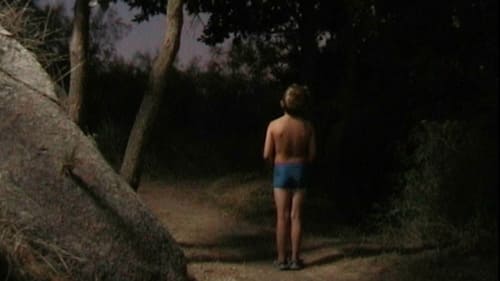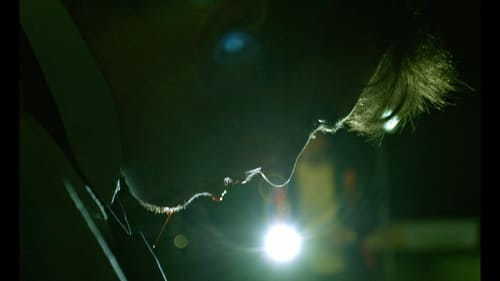Mutual Admiration Society (2014)
Género : Crimen
Tiempo de ejecución : 1H 2M
Director : Rouzbeh Rashidi, James Devereaux
Sinopsis
Surreal and mysterious, in equal parts absurd and intense, Mutual Admiration Society is part of the noted multi-film collaboration between actor James Devereaux and experimental filmmaker Rouzbeh Rashidi. Based entirely around a silent, tour-de-force one-man performance by Devereaux as a man who appears to be haunting and threatening himself, Mutual Admiration Society uses startling visual techniques and editing rhythms to create a claustrophobic hall of mirrors with Devereaux’s tormented protagonist at its centre.

A small Youtuber occasionally makes half ironic videos for few to see. A half narrative, half experimental view of the numb feeling of consuming endless amounts of content online instead of doing anything else, forever.

A tale of people unfolds under the night sky. These doomed couples and lost individuals begin journeys and attempt to find resolution in their lives. Love is observed from a distance, sadness is in the air. With little sympathy for the loss and destruction caused to the characters, the stories progress and become neatly woven into a minimalistic portrayal of modern life.

Weird Weird Movie Kids Do Not Watch The Movie is the second collaborative feature film between Rouzbeh Rashidi and Maximilian Le Cain. This hypnotic, visually and sonically immersive exploration of a haunted space unfolds in two parts. In the first, a woman (Eadaoin O’Donoghue) dissolves her identity into the ghostly resonances she finds in the rooms and corridors of a sprawling, atmospheric seaside basement property. In the second, a man (Rashidi), existing in a parallel dimension of the same space, pursues a bizarre and perverse amorous obsession.

Phantom Islands is an experimental film that exists at the boundary of documentary and fiction. It follows a couple adrift and disoriented in the stunning landscape of Ireland’s islands. Yet this deliberately melodramatic romance is constantly questioned by a provocative cinematic approach that ultimately results in a hypnotic and visceral inquiry into the very possibility of documentary objectivity.

A man (James Devereaux) sits on a park bench talking to the camera, trying to weave together a thought that won’t cohere while commenting on passers-by, his ‘guests’… Mysterious images intervene, overturning the serenity of the park-bench monologue. Rouzbeh Rashidi’s feature proves as engaging as it is elusive.

Three witnesses to the invasion. Three accounts. Are they observing the same thing? Were there any warning signs? And, after all they’ve seen and heard, are they even competent to offer a reliable report? The purpose of this film is to demonstrate that an effort to construct functions known not to exist may on occasion produce interesting frauds.

TRAILERS unites the most personal and experimental aspects of underground filmmaking with a scope that is as cosmically vast as a science fiction epic. Rashidi’s ongoing exploration into the nature of cinema sees a group of characters adrift in space, each locked into their own sexual rituals while a cataclysm of universal proportions unfolds. Humanity has become a mysterious burlesque show for alien eyes: the gaze of the film camera. This visionary spectacle uses multiple formats and visual textures in weaving an erotic anti-narrative suspended in its own space and time.

Through our eyes, the universe is perceiving itself. Through our ears, the universe is listening to its harmonies. We are the witnesses through which the universe becomes conscious of its glory, of its magnificence.

Summertime. In a camping, three little girls listen to an old mysterious story about a missing kid. They start to investigate.

HE, the third work in the ongoing collaboration between Rouzbeh Rashidi and actor James Devereaux, is a troubling and mysterious portrait of a suicidal man. Rashidi juxtaposes the lead character’s apparently revealing monologues with scenes and images that layer the film with ambiguity. Its deliberate, hypnotic pace and boldly experimental structure result in an unusual and challenging view of its unsettling subject.

The bodies of women lying on the ground weave relationships around them, they breastfeed, they connect with the ground ... Carla Simón's first short, shot on 16 mm in the Californian forests. An experimental exercise that connects with the cinematographic avant-gardes of the early twentieth century.

"A springtime Fantasy," everything comes joyfully together in mirthful mythic warmth as Bird Lad's white line on black background richly sprouts, blossoms and bursts with pantheistic fertility.

A documentary like no other. Starting with the bizarre practices and fantasies of a group of filmmakers working under the label Experimental Film Society, it spins off into a manifesto of light and sound. This dazzling journey through a view of cinema as cosmic ritual and erotic delirium is also an idiosyncratic celebration of the medium itself. Rouzbeh Rashidi’s ornate visual style unleashes a parade of visionary scenes that redefine movie magic as a fevered hallucination.

An assortment of obscure private obsessions, conspiracies and perversions flicker on the verge of incoherence against the context of vast cosmic disaster in Rouzbeh Rashidi’s boldest film to date. This sensory onslaught combines a homage to the subversive humour of Luis Buñuel and Joao Cesar Monteiro with the visionary scope of a demented science fiction epic.

HSP 100 is a portrait of experimental filmmaker Maximilian Le Cain. As Le Cain discusses his life, work and relationship with cinema, Rashidi envelops him in a hallucinatory audio-visual ambiance that ultimately results in a poetic dialogue with the ideas and feelings he expresses.

A relationship between a man and a woman discloses during the course of the film.

Self Decapitation is a Janus-headed self-portrait by Rouzbeh Rashidi and Maximilian Le Cain in which death and desire each take possession of this film in two parts. The ambiguities of inhabiting a human body are conjured by way of film technology in its faults, faulty memories and false promises. There is no escape from its haunting – except perhaps to haunt it in turn…

Andrew, a teacher, is attacked while leaving work in a failed mugging which results in him becoming critically injured. While he is bleeding out a Deity appears healing Andrew but this is at a cost.

A vivid sampler of the great Barcelona architect-sculptor’s work in situ, Sokoloff constantly is seeking out the most anthropomorphic images embedded in the intricacies of Gaudi’s buildings.

Beginning in 1965 with Black Is, Tambellini launched a series of politically charged experimental films that explore the expressive possibilities of black as a dominant color and idea. For the most part Tambellini’s seven “black films” are made without the use of a camera but rather by carefully manipulating the film itself by scorching, scratching, painting and treating the film stock as a type of sculptural and painterly medium.






